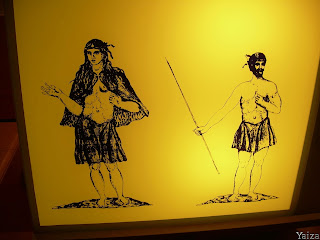We have spoken a bit about The Guanches, however to know a little more history it is necessary to speak about the conquest of the islands.
The islands had previously been visited by the Greeks and Romans, visits that were interrupted by the fall of the Roman Empire. During the Middle Age, the islands were not isolated. After Lanceloteo Maloce that stayed in 1312, there were more news about the islands. (Lanceloteo stayed in Lanzarote, and the name of the island is due to him).
Initially Aragonese, Castilian, Portuguese and Genoeses competed for control the island, finally the dispute was between Castilian and Genoeses.
This conquest was conceived as a company, which did not come out very profitable due to greater resistance that had The Guanches, knowledgeable about the islands, and the Castilians were not adapted to a place with so much elevation, as the case of the western islands .
The first islands in being conquered were Lanzarote, Fuerteventura, El Hierro and La Gomera. They called Islas de Señorio (like gentleman´s islands) due to the fact that they were conquered by the nobility, without any contribution of the Crown and for own benefit. The conquest of Lanzarote, Fuerteventura and El Hierro is known as Betancuria's conquest or Norman conquest,islands conquered by Jean de Bethencourt and Gadifer de la Salle. La Gomera was conquered by the Castilian nobility.
 |
| Ancient inhabitants of the islands. |
Gran Canaria, La Palma and Tenerife were conquered directly by the Crown, Los Reyes Católicos (The Catholic´s Kings) who provided everything for the conquest. The conquest lasted almost one hundred years, exactly from 1402 to 1496.
During the first conquests, several trips were realized describing to the other islands, to see the people who live there, the orography of every island, and the place where they could anchor.
Tenerife was the last island of being conquered, as Realengo island, was conquered by Alonso Fernandez de Lugo, who chose the island of Tenerife to be established and as payment for the conquest.
The two sides were formed by The Guanches during the conquest of Tenerife. On the one hand, it was the peace side (bando de paz) that was formed by the Menceyato de Güimar, Adeje, Abona and Anaga, coinciding with the south of the island. This side was in the Castilians favored, hurled their help. On the other hand, the war side (bando de guerra) was composed by Tegueste, Tacoronte, Taoro, Icode and Daute, who offered their friendship, but they rejected the acceptance of the Christianity and submission to the authority of the Reyes Católicos. This reject unleashed the battle.
Apart from the Castilians, also there were Canary. They were recruited after the conquest of Gran Canaria to become part of the Spanish troops.
The first battle was realized in Acentejo's ravine, belonging it these days to the municipality of La Mantaza de Acentejo, where The Guanches won the battle and Castilians lost much of the troop (the name of the municipality, Matanza de Acentejo (Killing of Acentejo) is due to this battle. The main objective of The Castilians were going to Taoro, for that reason The Guanches waited in that ravine. Fernandez de Lugo was saved and returned to Gran Canaria to prepare a new assault and to obtain more financial resources. The Guanches destroyed the fort that these had constructed when they arrived on the island.
To be back on the island, they reconstructed the fort and there took place Aguere's battle, where the Mencey Bencomo died, the strongest person of the resistance. The mistake was presenting battle in a flat zone, where the Castilians had the advantage.
 |
| Battle |
After this fact, an epidemic decimated The Guanches, it was known as La Gran Modorra (the Great drowsy). The majority of the population was left weak due to this epidemic. This fact could have affected the resistance.
The Castillians continued entering towards the north, Taoro's direction again. This time The Guanches were waiting in a ravine near the current municipality of La Victoria de Acentejo (Acentejo´s Victory), just a few meters of the Ravine of La Matanza. In this occasion the Castilians won,battle known as La Victoria de Acentejo (Acentejo's Victory, reason why the municipality is named), being able to facilitate the access to Taoro's Valley.(nowadays, this place is El Valle de la Orotava)
The Menceyes were baptized and was not heard from them. Some population was taken as slaves, and others lived on the island.
 |
| Inhabitans of the islands. |
When the conquest finished, the land was given out. Alonso Fernandez de Lugo had the majority of them, and the rest was distributed according to the help contributed in the conquest. Colons were coming during these centuries, like example Portuguese, Castilians, Genoeses, etc, due to the need of populate of the islands. They were given a piece of land , having to live and work in their whole life.
La Laguna was the first city in being born, which supported the capital of the island and for three centuries it was La Capitania General de Canarias (General Captaincy of the Canary Island) too. Until 1833 Santa Cruz was named as the capital of the island, granting both titles. In 1927 the capital of the islands is shared, being born the two provinces.
 |
| The conquest |
*The photos were taken at Naturaleza y el Hombre museum (nature and man´s museum).

No hay comentarios:
Publicar un comentario